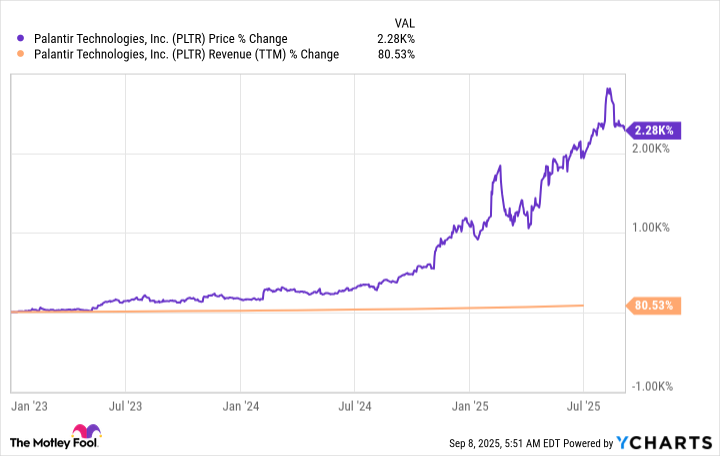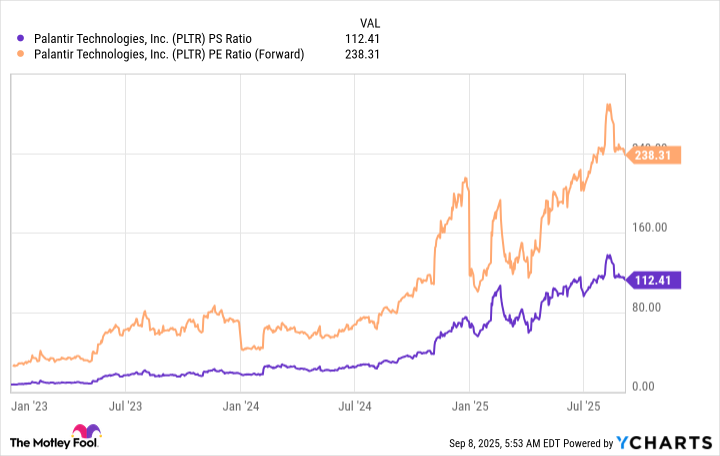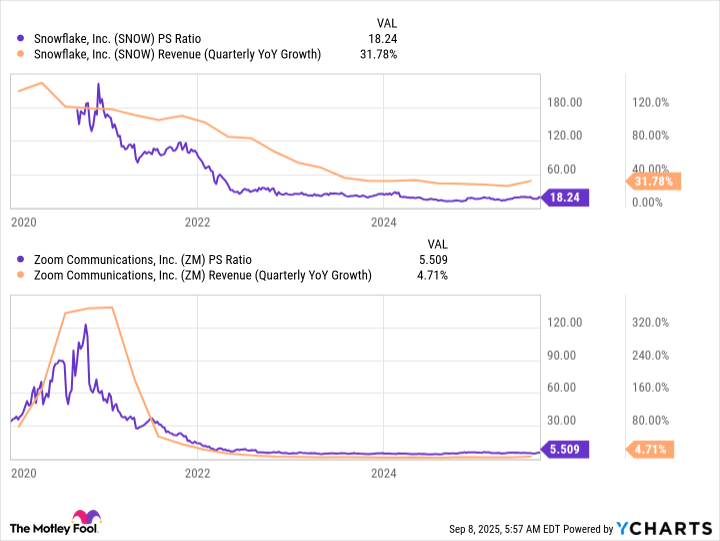Palantir Technologies (PLTR +4.14%) stock has been one of the top-performing stocks in the market over the past few years. The stock has delivered impressive returns, with it rising 2,280% since 2023, 792% since 2024, and 117% this year. Those kinds of results should be accompanied by massive business growth, which Palantir has also delivered.
However, its business hasn't grown significantly, and a massive amount of future growth is already priced into the stock, leading to the notion that Palantir could be in a bubble. But is it?
I believe history provides a clear indication of whether it is or isn't, and investors need to pay attention, as it could cost them a significant amount of money if historical indicators prove correct.

Image source: Getty Images.
Palantir's growth has been impressive
Palantir makes AI-powered data processing software. The basic concept behind its product is data in, insights out. While this may sound straightforward, it is actually quite complicated, and Palantir's AI model is a leader in its industry.
Originally, Palantir started off selling its software only to government entities, a client base that remains vital today. Palantir has also established a strong foothold in the commercial world, resulting in a dual client base structure.

NASDAQ: PLTR
Key Data Points
As the AI boom continues, both government and commercial clients have been employing Palantir software, with Palantir's commercial revenue rising 47% year over year to $451 million and government revenue increasing 49% to $553 million in Q2. That indicates incredibly strong performance from both client bases, so it shouldn't surprise investors that the stock has responded accordingly.
However, the growth that Palantir is putting up and the stock returns don't line up.
Palantir's stock is in bad company
With Palantir's stock up an astounding 2,280% since the start of 2023, you'd expect a similar level of business growth; otherwise, most of the stock returns come from a mechanism known as multiple expansion. This occurs when the market is willing to pay more for a stock's claim on a company's sales or earnings than it used to. Sometimes this is warranted, as a business could become more dominant or dramatically increase its margins. Other times, it's extremely dangerous and can lead to a bubble.
I think this is exactly what is happening with Palantir's stock, as the valuation levels it is reaching are unprecedented.
Since the start of 2023, Palantir's revenue is only up 81%.
That's nowhere near the stock price's return, giving us a clear clue that Palantir's valuation has risen exponentially, which it has. Palantir's stock now trades for more than 110 times sales and nearly 240 times forward earnings.
PLTR PS Ratio data by YCharts
Those valuation levels are seldom reached, even by companies with rapid growth. For comparison, Nvidia posted several quarters in a row where its revenue tripled, yet the stock never traded for more than 50 times sales or earnings. Currently, SoundHound AI has delivered 217% revenue growth, yet the stock has a price-to-sales (P/S) ratio of 42.
The evidence against Palantir is starting to pile up, but what are some other historical examples of companies that have grown quickly and traded at 100 times sales? Two that come to mind are Zoom Communications and Snowflake. Both companies had much faster growth rates than Palantir, with Snowflake and Zoom both delivering several quarters' worth of growth that's far more rapid than Palantir's. Each was also valued at more than 100 times sales.
SNOW PS Ratio data by YCharts
However, Snowflake remains over 40% down from its all-time high, and Zoom is down 85%.
It may take years for Palantir's bubble to burst, but no company has traded at a price as expensive as Palantir is that has ultimately worked out well for investors over the long term. There's just too much growth priced into the stock already to make any money, and when turbulent market conditions arrive (they will come eventually), the stock will be one of the first to sell off. As a result, I think investors should consider a different AI stock, as several promising ones exist that don't have nearly the expectations built into their stock prices.








